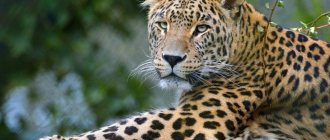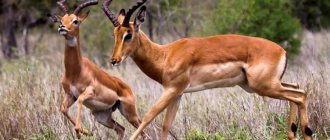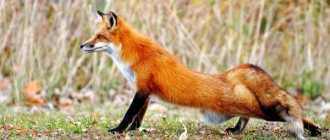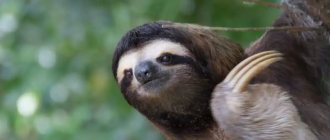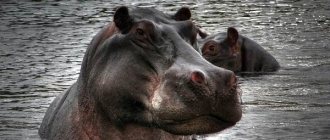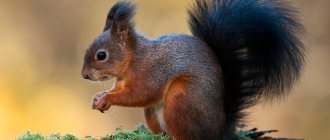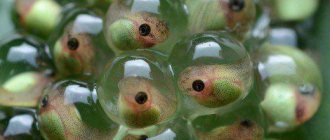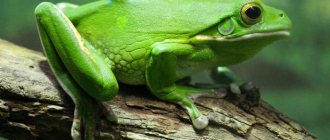History of the discovery of the Puma species
Humanity has known this unique American small cat for a long time; back in the Middle Ages, the first scientific description appeared, made by the Spanish Count Pedro Sierra Leon, who made many geographical discoveries and spent most of his life traveling around Central and South America. The work “Chronicles of Peru” written by him is the first unique travel encyclopedia.
The Spaniard was introduced to this wild cat by local Indian tribes, who took the animals inhabiting the jungle very seriously. So, for the Incas, the Puma was always a representative of the heavenly deity, for the Apaches they were harbingers of death, for the Cherokees these animals were simply inviolable and sacred.
After Spain enslaved the tribes of Central and South America, hard times came for everyone - for the local Indians, for the flora and fauna, and for the invaders themselves. Invasions of huge Pumas into camps each time ended with the disappearance of cows and mules, and the Indians did not allow the Spaniards to kill the sacred animals. Even expensive gifts to the leaders could not shake the persistence of the warriors. After all, the Indians believed that Pumas protected their tribes from the invasion of evil spirits and were ready to sacrifice mules to them.
Cougars at that time lived over very vast territories - practically from the southern shores of the Alaska Peninsula to the Strait of Magellan. In the end, the white hunters won - a widespread hunt was announced for Pumas. At first it went under the slogan of protecting livestock, but then the Yankees liked the hunting trophies themselves from cruel fun - luxurious skins, fangs, claws, and the settlers did not refuse the meat of these cats.
By the end of the 20th century, these gorgeous wild cats came to the brink of complete destruction. Nowadays, hunting for Puma is prohibited in America; the population size is being intensively restored in numerous nature reserves and national parks.
Read the article review of the entire cat family, which has 47 representatives.
Popular message topics
- Renaissance Era
The Renaissance chronologically covers the period from the 14th to the 16th centuries and represents a whole movement in literature, music, painting, and architecture. It replaced the Middle Ages and is radically different from it. - Lily
Lily belongs to the decorative perennial monocotyledonous bulbous plants from the Lileaceae family. The plant is unpretentious, the bulb is porous and loose, ovoid or round in shape. The bulbs are made up of individual small plates, - Quality of education at school
In modern schools, many problems arise with the quality of education. The quality of education is influenced by various factors, ranging from teachers without the proper skills and specialization, to the lack of necessary equipment in classrooms.
Mr. Cat recommends: characteristics, habitat of the Puma
According to the modern scientific classification, Pumas belong to small wild cats, although these animals have quite impressive sizes, which differ somewhat by subspecies. The average predator is only slightly inferior to the jaguar.
Puma concolor also has other names - Cougar or Mountain Lion. It is native to South and North America. The body length of this cat is from one to two meters (depending on the subspecies), height at the level of the scruff is from 60 to 80 cm, and the weight of male individuals reaches 120 kg. Sexual dimorphism is pronounced, females are much slimmer and smaller.
These are powerful, athletic animals with heavy, strong paws. The hind limbs are especially well developed; they help Cougars make huge jumps of about three meters and reach speeds of about 55 km/h.
Despite the fact that in the systematization of felines the Puma is a small cat, in size it is second only to the tiger, lion and jaguar. Even a leopard is smaller than a Cougar. On American lands it is the second largest feline predator, after the jaguar.
The limbs and head seem small against the backdrop of a strong, flexible body, but overall the appearance of the animal is proportional. The tail is almost equal to the length of the body, it is strong, evenly covered with hair.
Powerful paws end in wide pads that hide sharp, curved claws that can be fully retracted. Thanks to them, the predator is excellent at climbing trees and rocks, damaging prey and enemies. Like all cats, there are five toes on the front limbs and four on the hind limbs.
The toes are elongated and round in shape with three lobes on the heel. There are thirty teeth, on the upper and lower jaws there are six incisors and two canines each. They are sharp and powerful, the beast calmly bites through the skin, grinds joints, and destroys the muscle tissue of victims. They are fully formed by the age of two, but over time they become darker, turn yellow and lose their sharpness.
Unlike the leopard, the Cougar has no pattern, with hard, coarse fur that fits tightly to the skin. The Latin word “concolor” itself, present in the name of the species, means “having one color”, and “puma” is borrowed from the language of the Quechua Indian tribes.
The color ranges from brownish-grayish to almost yellow, but the abdominal and chest areas and the inner surfaces of the paws are always lighter. In their color scheme, their bodies are almost identical to the colors of deer, and this is the main prey of these predatory cats. There are whitish markings on the belly and chest, dark marks on the muzzle, and the tail always ends with a black mark.
Cougars that live in warmer southern areas tend to be slightly smaller and brighter in color, with more warm, yellowish tones in their coats.
Northern Cougars are larger and have more of a grayish color to them.
If we talk about morphological characteristics, the closest relatives of Pumas are the American cats Jaguarundi and the subspecies of the North American cheetah Miracinonyx, which has already disappeared from the face of the planet today. Read about Cheetahs on the Mister Cat portal.
A sign of small cats present in Pumas is, perhaps, only complete ossification of the hyoid plate, which has led to the inability of the animal to roar and growl loudly.
The Cougar's ears are of medium size, widely spaced and slightly tilted to the side, the edges of the shells are uniform, there are no tassels, and they are rounded at the top. The eyes are large, almond-shaped, expressive, and can be brown, green, or yellowish-golden. Often outlined with a beautiful dark line, like the powerful brick lobe of a wide nose.
The chin and anus are often also lighter than the main background; the whiskers are usually completely white.
The historical range of the Puma's natural habitat (from Patagonia to Alaska) has today been significantly reduced. In practice, they remained only in the mountainous regions of western North America.
South American Cougars are distributed almost evenly across the continent. The biotopes they live here are varied - mountainous coniferous thickets, grass-covered plains, cliffs up to five thousand meters above sea level, river floodplains.
Puma species
Pumas, in their distribution on the American continents, have long been the most numerous mammals, there were even more of them than lynxes, forest cats and jaguars. Depending on the biotopes of residence, the characteristics of climatic and territorial conditions, the morphological characteristics of zonal populations were also formed.
More recently, in the scientific classification there were thirty subspecies of Cougars. Today, some have become extinct, others have been combined into common ones, and only six stand out:
- The North American Puma Puma concolor couguar is distributed from the southern Canadian border to Guatemala and Belize;
- Central American subspecies Puma concolor costaricensis, found in Nicaragua, Costa Rica and Panama;
- Eastern South American Puma Puma concolor capricornensis, inhabiting lands from the Brazilian shores of the Amazon to Paraguay;
- The northern subspecies of South America Puma concolor concolor lives in Colombia, Venezuela, Guyana, Guiana, Ecuador, Peru, Bolivia;
- Central South American species Puma concolor cabrerae, found in northeastern Argentina and Uruguay;
- Southern subspecies of Latin America Puma concolor puma, found in Chile and southeastern Argentina.
Of the old classification, the best known were:
- California Puma Puma concolor californica;
- Costa Rican Puma Puma concolor costaricensis;
- Eastern Puma Puma concolor couguar, found in the northern regions of the United States and southern Canada;
- Mexican Puma Puma concolor browni;
- Peruvian (Ecuadorian) Puma Puma concolor incarum;
- Amazonian Puma Puma concolor discolor;
- Texas Puma Puma concolor stanleyana;
- Wisconsin Puma Puma concolor shorgeri, extinct 1925;
- Florida Puma Puma concolor coryi.
Sometimes color isomorphs of Pumas are found; these are individuals of very light and even snowy shades, as well as dark brown. These animals are neither albino nor melanistic. This species does not have these gene mutations.
Florida Puma - the rarest species
Florida Cougars need to be mentioned separately. Previously, these wild cats lived throughout Arkansas, Louisiana and Florida. Now these animals are the rarest and smallest subspecies. Some researchers even consider it completely extinct.
A small population, about 150-200 individuals, remains in the Big Cypress National Preserve in the forested part of southern Florida. These cats prefer swampy areas, and due to the drainage of these sources, as well as uncontrolled hunting, their almost complete extermination occurred.
Florida cougar
Moreover, in the 70s of the last century there were only twenty individuals, but protective measures made it possible to increase the number of the group. This Puma is perhaps the smallest in size and with the longest legs. But with a dark red bright color.
These cats have one more feature. Since the latest increase in numbers occurred due to a small number of pairs, the percentage of inbreeding is very high, so the animals have a negative mutation - a curved tip of the tail. Scientists plan to cross this subspecies with others to form a healthy, self-developing population.
Hybrids with Puma
Interspecific hybrid cats formed with the participation of Pumas are also known:
- Pumapards (male cougar and female leopards);
- Ocepuma (Puma father and mother ocelot);
- Pumaguars (Puma Jaguar).
Where do they live?
— Advertising —
The cougar's historical range in the Americas was very wide, with the species occurring everywhere from southern Patagonia to southeastern Alaska. Now the predator is preserved in the USA and Canada, in the mountainous regions in the west, as well as in South America to Patagonia. In eastern North America, cougars have been completely extirpated, except for a small population of the subspecies Puma concolor coryi in Florida.
Puma's diet
Cougars are classic night hunters. Animals usually go out for prey in the twilight hours, but the process can drag on for a long time. The fact is that the main diet of this predator is large ungulate mammals, usually several times larger than a cat in size.
If Cougar attacked elk and buffalo in daylight, and even in open areas, then it would not be worth talking about instant prey and the outcome of the fight.
The Mountain Lion is very cunning and cautious. He tracks down prey on the paths leading to a watering hole, entering from the windward side so as not to frighten off the prey ahead of time. Then follows a lightning-fast jump onto the animal’s scruff, and now the sharp fangs tear the neck vein, break the spine or strangle.
One should not think that Pumas feed exclusively on artiodactyls. These predators are omnivores and do not refuse any protein food. Their diet may also include:
- rodents – mice, marmots, voles;
- proteins;
- opossums;
- rabbits;
- coyotes;
- other predatory cats;
- porcupines;
- sloths;
- monkey;
- prairie dogs;
- beavers;
- armadillos;
- birds;
- fish;
- insects and snails.
Ungulates still occupy the majority of the Cougar's diet. This is most often:
- deer – black- and white-tailed, pampas;
- moose;
- wapiti;
- caribou;
- bighorn sheep.
In Latin America, Mountain Lions often attack humpless camels and also fight alligators. Any Pumas are able to fight baribals, grizzly bears.
In times of famine, the Puma gladly robs cattle farms, destroying any animals - cows, horses, mules, poultry, dogs and cats.
This predator is capable of eating up to one and a half tons of meat in a year. Having laid down the deer, the animal eats only part of the carcass, up to 10 kg, and prefers to hide the rest in secluded places. In general, this animal tends to make reserves, which are often stolen by scavengers and even by people, if hunters specifically followed the Puma for this purpose.
Despite its tendency to be nocturnal, a very hungry Cougar is capable of hunting during daylight hours.
Features of behavior
A predator that is equally capable of hunting day and night can adapt to any living conditions. The cougar moves calmly along mountain slopes, climbs trees and rock formations remarkably well, and is an excellent swimmer.
Like most wild cats, the Puma leads a solitary lifestyle, forming pairs only during the mating season for reproduction.
The Mountain Lion has “its own” hunting grounds, their size depends on the density of potential prey, but on average this figure ranges from 30 to 1050 square kilometers.
For males, the controlled territory is always larger than for females and most often overlaps the zone of females. Cougars prefer not to collide with each other, cleverly avoiding collisions and skirmishes. The guidelines for refusing to invade a “foreign” zone are physiological marks and scratches on tree trunks and the surface of the earth.
Cougars are silent; the ossified hyoid plate does not give them the opportunity to roar or even growl loudly. During the mating season, cats make peculiar sounds reminiscent of human screams. Also, females affectionately “talk” to kittens, purr, meow, and hiss.
Strong paws allow Cougars to make giant leaps - up to 6 m in length and up to 3 m in height, and make short runs at speeds of up to 60 km/h.
Despite the adult's desire for solitude, youngsters who have just left their mother, usually for some time before the first rut, stay together.
In nature, the Mountain Lion has practically no enemies (except humans). A jaguar, a pack of wolves, a grizzly bear, a baribal, a crocodile, a black caiman, and an alligator can pose a danger to this brave cat.
At the same time, baribals and grizzlies often pursue Pumas in order to take away part of the prey of this dexterous hunter.
Cougars try to avoid collisions with humans, but they can attack a lone traveler, especially at night or at dusk. The agility of these animals makes them extremely dangerous.
Natural enemies of cougars
Photo: What a cougar looks like
Cougars do not have enemies constantly hunting for them.
Sometimes clashes with predators such as:
- the Bears;
- wolves;
- jaguars;
- alligators.
Most often, cougars attack first, but if they are attacked, they can hide from any of the animals listed. Unless the jaguar has a chance to catch up with them, but even he is usually dangerous only for young or old pumas. It's the same with wolves - even a pack of wolves will not attack a healthy adult puma, because they know that it will cost too much.
Therefore, pumas have no real natural enemies, and they could feel almost completely safe if not for people. Due to the fact that these cats kill livestock and domestic animals, in the past they were often shot, and most of the cougars that died not from natural causes were killed by people.
But, if the situation with other subspecies is the same in our time, with cougars it has changed. Thanks to legislative bans in the United States, now much fewer of them are dying, which has made it possible to preserve their population, because there is almost no one except people to exterminate these cats.
Interesting fact: Baby cougars can be tamed, and they will get along well not only with their owners, but also with pets that are killed by wild individuals. But this does not apply to birds; even domesticated animals tend to hunt them.
Puberty and reproduction
The mating season is not tied to any specific time of the year, but in the northern regions it still often occurs in December-March.
Females breed for 9-10 days. Males at this moment fight among themselves for the attention of women and try to mate all the individuals located on their territory.
The female bears the cubs for a long time, like big wild cats - from 85 to 98 days. Babies are born blind and completely helpless, they weigh 300-500 g and are about 25-30 cm in length. There are from one to six kittens in a litter. The color at birth is very dark with charcoal markings; it begins to change only at one year of age. The coat is much thicker, there are ring stripes on the paws and tails. When the eyes open, about two weeks after birth, they are bright blue, changing to green or yellow only at six months.
Up to one and a half months, the babies only suckle their mother, then they begin to leave the den, try solid food, and play actively.
Until one and a half to two years old, young Pumas live next to their mother, learning from her the science of hunting and survival in the wild. Closer to the mating season, the children leave, until the first rut they hunt together.
Sexual maturity comes to females at 2.5-3 years, to males a little later. Animals do not begin to mate immediately, only after they have found “their” hunting area.
It is easier for young females; they can always settle down close to their mother and count on her help. Young Mountain Lions are forced to fight with experienced males to conquer hunting grounds or travel thousands of kilometers in search of “no man's” lands. It is these animals that most often attack people; they worry about parting with their mother, and are often irritated and hungry.
In their native habitats, Pumas rarely live to be 15 years old, and males die more often. In captivity, the life expectancy of Mountain Lions is much longer - 20-25 years.
Captivity
The puma is perhaps one of the few species of wild cats that is still quite numerous, despite the fact that they are still hunted and their natural habitats are gradually being reduced.
The Cougar's strength lies in its incredible ability to adapt to new living conditions and survive. Thus, the population of Mountain Lions in North America (western regions), practically exterminated at the end of the last century, now numbers more than thirty thousand individuals, continues to multiply and spread to the southern and eastern territories.
However, some subspecies have already been wiped out from the face of the planet, while others are on the verge of extinction and are listed in the International Red Book and the first appendix of the CITES Wildlife Trade Conventions. These are Puma concolor coryi, Puma concolor costaricensis, Puma concolor couguar. Hunting and selling of these Pumas is prohibited, although partial shooting due to attacks on livestock is sometimes necessary.
Another subspecies of Cougar - the Florida Puma Puma concolor coryi, which we have already written about, is simply in a critical state in terms of population size; it is listed in the Red Book with the status “critically endangered”. During the reign of Theodore Roosevelt, numerous societies for the protection and protection of animals were created, but these measures did not apply to Pumas. As the main eaters of livestock, they continued to be exterminated. In some ways, these measures are justified, because there are a lot of attacks on people.
It should be remembered that in areas where Pumas live, the following precautions should be carefully observed:
- Do not let children go and keep a close eye on them, as Cougars most often attack them or short adults, avoiding contact with tall, strong men.
- When moving through the forest, have at least a strong stick in your hands.
- Do not hike alone here.
- Do not move during twilight and night hours.
- Always light fires at camp sites and do not leave them alone and without weapons.
- When attacked by an animal, do not run away under any circumstances. You need to look straight into the eyes of the predator and “howl.” Sometimes this method scares away the beast.
Nowadays, numerous national parks and reserves have been created in both Americas to increase the number of Cougar populations.
These wild cats get along well in captivity and bear offspring well; many of them live in zoos in different countries. In recent years, interest in Pumas has increased as potential pets.
It should be remembered that at a young age, Puma kittens are really cute and seem harmless. As the animal grows older, the wild, predatory nature can absorb all its affections. A strong adult animal should be kept only in an enclosure and handled with caution; it cannot be tamed.
Nevertheless, there are breeders of these animals. An animal can be purchased at a price from 5 to 20 thousand dollars.
Classification
- Kingdom: Animalia (animals)
- Phylum: Chordata
- Class: Mammalia (mammals)
- Order: Carnivora (predatory)
- Family: Felidae (felines)
- Genus: Puma (cougars)
- Species: Puma concolor (puma)
Puma concolor is the only species of the genus Puma. Until 1995, pumas belonged to the genus Felis, which formerly included many much smaller and less vocal cats, but not jaguars (Panthera onca).
The difference between a Puma and a Panther
First of all, it should be noted that the four largest wild cats belong to the Panther genus - Tiger, Lion, Leopard, Jaguar. It would probably never occur to anyone to compare the Puma with the first two; these animals are too dissimilar in appearance, size, morphology, and color.
Leopards and Jaguars are smaller than Lions and Tigers, but their color is very bright “tabby”, so it is difficult to confuse them with the same-colored Cougar. In addition, only the Jaguar and the Mountain Lion can cross their native habitats, and only these species live in the Americas.
This means that we can only talk about the black Jaguar, which ordinary people usually call the Panther. These individuals are rare and most often they are not charcoal, but dark chocolate. There is also a black Panther - a melanistic Leopard, but the Leopard lives in Africa and Asia, so we will not talk about it here.
Black Jaguars still have spots on their bodies, although with this color it is difficult to see them. Pumas may in some way externally resemble such a Jaguar-Panther, especially their colored dark brown isomorphs.
Nevertheless, such a Panther and a Puma will still have a different coat color in terms of the saturation of dark shades. The color of the Cougar is lighter in any case and there are no spots or stripes on it, because the very name of the animal means “one-color.”
If we talk about the genetic nature of animals, then the black Panther is a melanistic cat, but the dark brown Puma is not. Such mutations have not been identified in this type of cat, nor has albinism.
Both the Panther and the Cougar are flexible and agile animals with strong paws and long powerful tails. Therefore, something in the silhouette of cats may be common. In Pumas, the hind limbs are much longer and stronger, which means that the sacrum is located higher, and the line of the back has a deflection, unlike the straight line of the Jaguar.
The panther is a large cat and is capable of growling and roaring loudly. The Puma has a different structure of the tongue and larynx; it cannot roar, but, unlike the Jaguar, it can purr and meow.
Black Panther or Melanistic Jaguar
Both Pumas and Panthers are solitary hunters who pair up only during the mating season. But the first cat loves forests and mountains, it’s not for nothing that it is called the Mountain Lion, and the Jaguar prefers the hot tropical jungle.
Description
The name puma comes from the Quechua Indian language and means “powerful.” This word was borrowed first by the Spaniards in the 16th century, then by the British in the 18th century. An alternative name, cougar, comes from the Portuguese çuçuarana,
The Portuguese, in turn, borrowed the name from the indigenous inhabitants of southern Brazil. Early Spanish conquistadors nicknamed the predator the mountain cat, or simply the lion. In Canada and the western United States, the cougar was also called the mountain lion; the name first appeared in print in 1858.
The puma is listed in the Guinness Book of Records as the animal with the most names. In the English language alone there are more than 40 different names for this animal.
The animal's scientific name Puma Concolor (originally Felis Concolor) was proposed by Carl Linnaeus in 1771, who described the predator as a long-tailed wild cat from Brazil. From Latin, concolor is translated as one-color, which reflects the uniform color and complete absence of spots on the puma’s skin. The animal was assigned to the genus Puma by Scottish naturalist William Jardine in 1834. The puma's closest relatives are jaguarundi and cheetahs.
Interesting facts about Pumas
The puma attacks short people only at dusk and at night, and even then only if they move quickly. The animal simply perceives them in this case as prey.
A cougar is capable of carrying the carcass of a killed animal, the weight of which is up to seven times its own, over long distances and even dragging it up a tree.
In Latin America, there are still tribes that live off the hunting dexterity of Pumas. The Indians are chasing the predator, after the animal has made a burial and hid the carcass, people take the meat.
Man has always admired Cougar's strength, intelligence and agility. The Indians often gave their children names related to the name of the beast, and depicted the Mountain Lion on rocks and ceramics. The Inca tribe considered this cat associated with the gods of heaven and thunder. The Apaches associated every cry of the beast with the arrival of death. For the Cherokee Indians, it was an inviolable, sacred animal, like the Jaguar.
Dreams involving Puma
People have always been attracted to this mysterious predator; esotericism even tries to interpret dreams with this wild cat.
- Often this cat in a dream is a harbinger of a new love affair.
- If you dream of hunting an animal, then you should think about your own mental world, rethinking your life.
- If you dream of a Cougar being captured or caught in a trap, this foretells failure in love affairs.
- A healthy, beautiful animal, proudly striding through the forest, a symbol of strength, splendor, elegance, passionate nature, sensuality.
- If a woman dreams of the Mountain Lion, then most likely there is a lot of gossip and slander around her, and most often she herself provokes and spreads them.
- For a man, a dream with a Puma symbolizes sexual dissatisfaction and melancholy.
- If you dream of a Cougar on a harness and leash, this is a hint that you should control your desires and aspirations.
- An angry, growling beast signals a major conflict brewing.
- A young and brilliant female Puma is a symbol of a calm, blessed life.
- An aggressive male is a warning about imminent troubles in your personal and business life.
- If you dream of a Mountain Lion during a hunt, then in life you should adhere to a neutral position in difficult moments in order to avoid future difficulties.
- If a handsome animal lies on a tree branch, and the sleeping person admires it, then, most likely, hot expectations will not come true.
- If Puma is afraid, but approaches a person in a dream, this indicates that all plans will soon be fulfilled.
Puma photo gallery:
